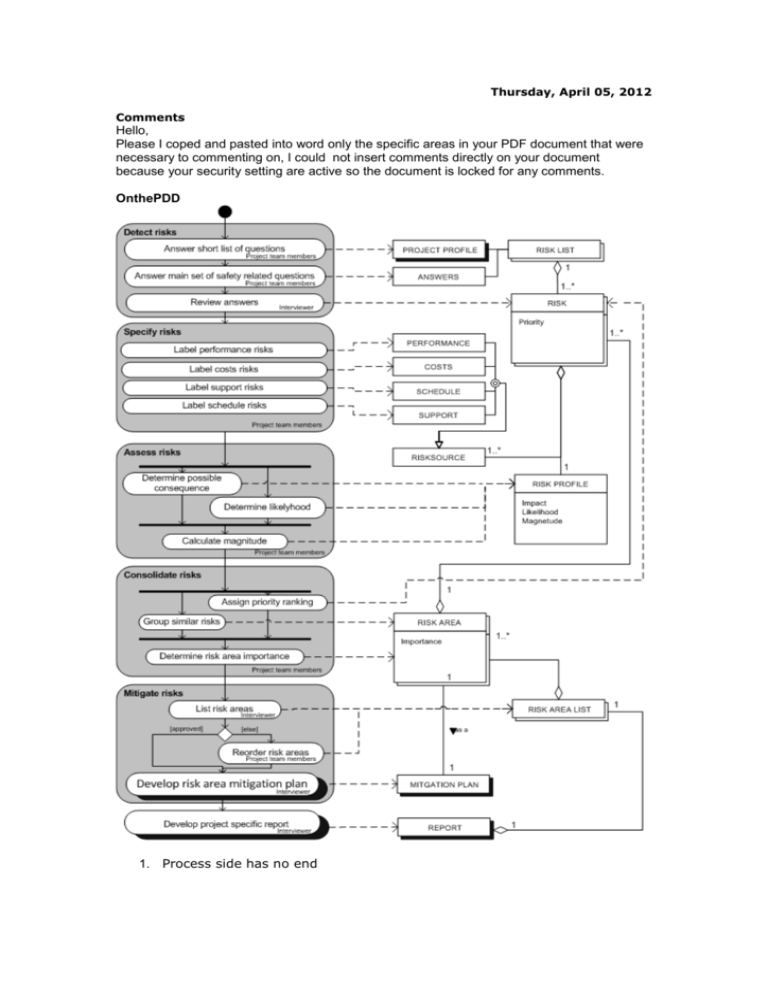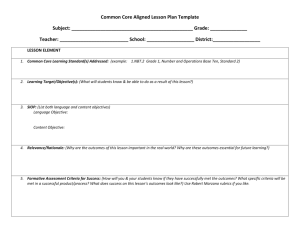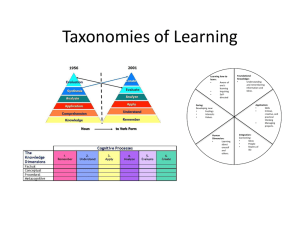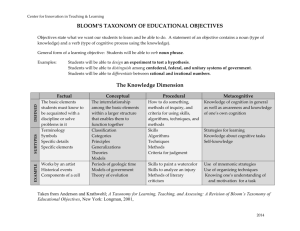review_Comments_Yorick
advertisement

Thursday, April 05, 2012 Comments Hello, Please I coped and pasted into word only the specific areas in your PDF document that were necessary to commenting on, I could not insert comments directly on your document because your security setting are active so the document is locked for any comments. OnthePDD 1. Process side has no end Please I have pasted this table here just to put comments where necessary for your revision. Table 6. Activity table of the PDD of the SSRE process Activity Detect risks Sub-Activity Answer short list of questions Description The answers on a short list of questions are used to create a PROJECT PROFILE. Answer main set of safety related questions The ANSWERs on a main set of safety related questions are given. These questions are taken from the Software Safety Risk Taxonomy (Hill & Victor, 2008). Review answers The ANSWERs are reviewed and the ANSWERs that point to an issue or concern are noted as entered as RISKs. Specify risks Label performance risks All RISKs that have performance as the source of the RISK impact are labeled. For each RISK a support RISK SOURCE is added. Label support risks All RISKs that have support as the source of the RISK impact are labeled. For each RISK a support RISK SOURCE is added. Label costs risks All RISKs that have costs as the source of the RISK impact are labeled. For each RISK a costs RISK SOURCE is added. Label schedule risks All RISKs that have schedule as the source of the RISK impact are labeled. For each RISK a schedule RISK SOURCE is added. Asses risks Determine possible For all RISKs the possible consequence consequence (Likely, Probable, Possible, Unlikely or Improbable) is determined. Determine probability of occurrence For all RISKs the probability of occurrence (Catastrophic, Critical, Marginal or Negligible) is determined. Calculate magnitude For all RISKs the magnitude is calculated. This is done by multiplying the possible consequence with the probability of occurrence of the RISK. The scale of this magnitude is from 1 to 7. Consolidate risks Group similar risks Similar RISKs from different RISK SOURCEs are grouped together which form RISK AREs. Assign priority ranking To all RISKs a priority is assigned based on how important the RISKs is to the project. This ranking is done a scale from 1 to 5. Determine risk area importance The importance of each RISK AREA is calculated. This is done by taking all RISKs in the particular RISK AREA with priority 1,2,3 and then divide this by the total numbers of RISKs in the RISK AREA. Mitigate risks Reorder risk areas List risk areas All RISK AREAs are listed in the RISK AREA LIST and ordered on importance of the RISK AREAs. After the RISK AREA LIST is reviewed the RISK AREA LIST is optionally changed. This is done by reordering the RISK AREs. Related Literature As mentioned in their paper the SSRE process developed by Hill and Tilley (2010) is a slightly modified version of SEI Software Risk Evaluation (SRE) practice (Higuera & Haimes, 1996). This SRE was one of the methodologies used for Software Risk Management (SRM), particularly the maintenance methodologies for SRM. The questions in the first phase of the process were taken from the Software Safety Risk Taxonomy Based Questionnaire (TBQ) (Hill & Victor, The Product Engineering Class in the Software Safety Risk Taxonomy for Building Safety-Critical Systems, 2008). These questions were based on an earlier paper by Hill (2007) on the topic of specializing Software Development Risk Taxonomy with safety elements and attributes. In this paper she proposes a new Software Safety Risk Taxonomy, which is an extension from the Software Engineering Institute (SEI) Software Development Risk Taxonomy (Carr, Konda, Monarch, Ulrich, & Walker, 1996) and the Risk Taxonomy Proposal for Software Maintenance (Higuera & Haimes, 1996). In their paper Hill and Scott (2010) also mention a tool they developed to maintain all the information collected by the SRRE process. This Legacy Systems Risk Database (LSRD) tool provides a framework for the process and has a supporting role in the decision making of the project manager . An extensive search for literature that positions this topic has yielded nothing. The co-author – Scott Tilley – has not wrote any papers on this subject before he coauthored the paper of Janice Hill (The DBLP Computer Science Bibliography, 2012).








